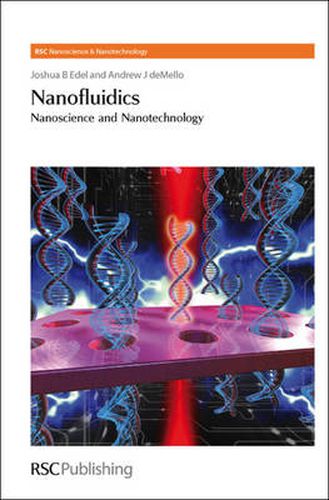Readings Newsletter
Become a Readings Member to make your shopping experience even easier.
Sign in or sign up for free!
You’re not far away from qualifying for FREE standard shipping within Australia
You’ve qualified for FREE standard shipping within Australia
The cart is loading…






In his now celebrated lecture at the 1959 meeting of the American Physical Society, Richard Feynman pondered the potential of miniaturization in the physical sciences. His vision, based on known technology, examined the limits set by physical principles and proposed a variety of new nano-tools including the concept of
atom-by-atom
fabrication. In the intervening decades, many of these predictions have become reality. In particular, the development and application of nanofluidics is becoming a competitive and exciting field of research. These nanoscale analytical instruments employ micromachined features and are able to manipulate fluid samples with high precision and efficiency. In a fundamental sense, chip-based analytical systems have been shown to have many advantages over their conventional (larger) analogues. Despite the growth of this field, there are surprisingly few books dedicated to nanofluidics. This book will fill the gap in the literature for a text focusing on bioanalytical applications. Written at a level accessible to experts and non-experts alike, it has the potential to become a mainstream text book for advanced nanobiotechnology courses within academic institutions.
$9.00 standard shipping within Australia
FREE standard shipping within Australia for orders over $100.00
Express & International shipping calculated at checkout
In his now celebrated lecture at the 1959 meeting of the American Physical Society, Richard Feynman pondered the potential of miniaturization in the physical sciences. His vision, based on known technology, examined the limits set by physical principles and proposed a variety of new nano-tools including the concept of
atom-by-atom
fabrication. In the intervening decades, many of these predictions have become reality. In particular, the development and application of nanofluidics is becoming a competitive and exciting field of research. These nanoscale analytical instruments employ micromachined features and are able to manipulate fluid samples with high precision and efficiency. In a fundamental sense, chip-based analytical systems have been shown to have many advantages over their conventional (larger) analogues. Despite the growth of this field, there are surprisingly few books dedicated to nanofluidics. This book will fill the gap in the literature for a text focusing on bioanalytical applications. Written at a level accessible to experts and non-experts alike, it has the potential to become a mainstream text book for advanced nanobiotechnology courses within academic institutions.